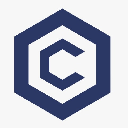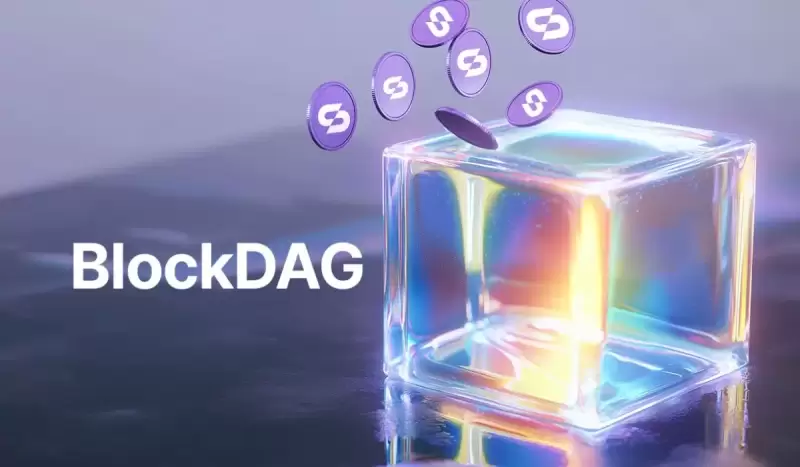 |
|
 |
|
 |
|
 |
|
 |
|
 |
|
 |
|
 |
|
 |
|
 |
|
 |
|
 |
|
 |
|
 |
|
 |
|
Cryptocurrency News Articles
Scroll: A Layer 2 Blockchain Built on Ethereum to Improve Scalability and Efficiency
Nov 10, 2024 at 09:01 pm
In recent years, Ethereum's scalability has been one of the most debated topics within the blockchain ecosystem. Its network has faced issues of high congestion and elevated transaction fees

In recent years, Ethereum’s scalability has been one of the most debated topics within the blockchain ecosystem. Its network has faced issues of high congestion and elevated transaction fees, especially when subjected to high demand. One of the latest proposals to tackle this problem is Scroll, a blockchain with interesting tools to improve efficiency and reduce costs.
What is Scroll?
Scroll is a Layer 2 (L2) blockchain built on the Ethereum network, designed to improve scalability and efficiency through the implementation of zk-rollups. This scalability solution, operating off-chain from Ethereum’s main network, allows for faster and more cost-effective transaction processing, alleviating the load on the main chain and reducing transaction fees.
Its adoption of the zkEVM (Zero-Knowledge Ethereum Virtual Machine) concept gives it full compatibility with the Ethereum Virtual Machine (EVM). Thanks to this feature, Scroll can run decentralized applications (dApps) designed for Ethereum without developers having to modify the base code. This bytecode compatibility makes it easier for projects to migrate from ETH to SCR, ensuring a smooth transition for developers already familiar with the ETH environment.
zkEVM AND zk-Rollups: The Heart of Scalability in Scroll
The cornerstone of Scroll is its use of zkEVM, an advanced implementation of zk-rollups that not only enhances Ethereum’s scalability but also maintains full compatibility with the EVM. This means that developers can deploy smart contracts using any EVM-compatible language without needing to learn new languages or adapt their code. This flexibility removes the technical barriers that often exist in other solutions, which frequently require specialized programming languages and more complex processes.
How is Scroll’s Architecture Composed?
Scroll’s architecture is composed of several interconnected elements that enable it to function as a zk-rollup solution on Ethereum. Below, we will explore each of these components in detail:
* zkEVM: As mentioned earlier, Scroll is built upon the zkEVM technology, which provides it with complete compatibility with the Ethereum Virtual Machine (EVM). This allows developers to deploy smart contracts on Scroll using any EVM-compatible language without needing to modify their code.
* zk-Rollups: Scroll utilizes zk-rollups to bundle a large number of transactions off-chain before submitting them to Ethereum’s main network. This technique helps reduce gas fees and congestion on the main chain while enabling faster transaction processing times.
* Testnet: Scroll currently operates a testnet where users can interact with the platform firsthand and participate in testing various decentralized applications (dApps) and projects.
* Scroll Token (SCR): Role, Utility and Relevance
The SCR token plays a crucial role, not only as an incentive tool for network participation but also as a mechanism to ensure efficient and decentralized operation. Let’s explore how this cryptocurrency integrates within the network architecture and the advantages it offers to users and developers.
It is primarily used for two purposes: participation in the decentralized governance of the network and as a medium to pay transaction fees within the ecosystem.
Its Impact on the Ethereum Ecosystem
The implementation of Scroll within the Ethereum ecosystem has the potential to alleviate some of the network’s biggest problems, especially those related to scalability and high costs. Layer 2 solutions like SCR have become increasingly necessary to ensure the blockchain remains operational efficiently and accessibly.
Thanks to Scroll, developers now have a scalability platform that not only improves the user experience but also enables the creation of more complex and feature-rich applications, taking advantage of its greater capacity at scale without the risk of congesting the main network.
Furthermore, it’s worth highlighting that Scroll has attracted a large developer community, as seen in the wide range of projects already being implemented on its testnet. This point is crucial to ensure the long-term sustainability and growth of the platform.
Conclusion
Scroll is a promising solution for Ethereum. Its ability to improve scalability, reduce gas fees, and enhance transaction speed positions it as one of the leading alternatives to address the issues facing Ethereum.
While it still faces fierce competition from solutions like Arbitrum and Optimism, the technical proposition and user experience it offers will give it what it needs to gain a loyal audience committed to taking Ethereum to the next level.
Disclaimer:info@kdj.com
The information provided is not trading advice. kdj.com does not assume any responsibility for any investments made based on the information provided in this article. Cryptocurrencies are highly volatile and it is highly recommended that you invest with caution after thorough research!
If you believe that the content used on this website infringes your copyright, please contact us immediately (info@kdj.com) and we will delete it promptly.
-

-

- Grayscale Files to Convert Its Digital Large Cap Fund Into a Spot Cryptocurrency ETF
- Apr 05, 2025 at 11:20 am
- YEREVAN (CoinChapter.com) — Grayscale submitted an S-3 filing to the US Securities and Exchange Commission (SEC) on April 1. The filing seeks to convert its Digital Large Cap Fund into a spot cryptocurrency ETF, allowing it to be publicly traded.
-

- Avalanche's AVAX Token Is Poised for Major Gains, Outpacing Bitcoin and Ether: Standard Chartered
- Apr 05, 2025 at 11:15 am
- Avalanche's AVAX token is poised for major gains in coming years that should outpace already bullish outlooks for both bitcoin and ether, according to Standard Chartered's Geoff Kendrick. By Sam Byfield.
-

-

-

- Introducing Jupiter VERIFY, a Community-Driven Verification System Designed to Enhance Transparency and Security
- Apr 05, 2025 at 11:10 am
- The system, built on extensive development and feedback over three years, introduces two key verification tiers and a dynamic framework for evaluating tokens: blue-chip and community-assisted verification.
-

-

- BitMEX co-founder Arthur Hayes makes a bold prediction: the price of Bitcoin could surpass $250,000 by the end of 2025
- Apr 05, 2025 at 11:05 am
- Arthur Hayes reveals a shocking analysis on the future of Bitcoin. This analysis is based on recent adjustments to monetary policy that could spur strong demand for the leading cryptocurrency.
-



























































